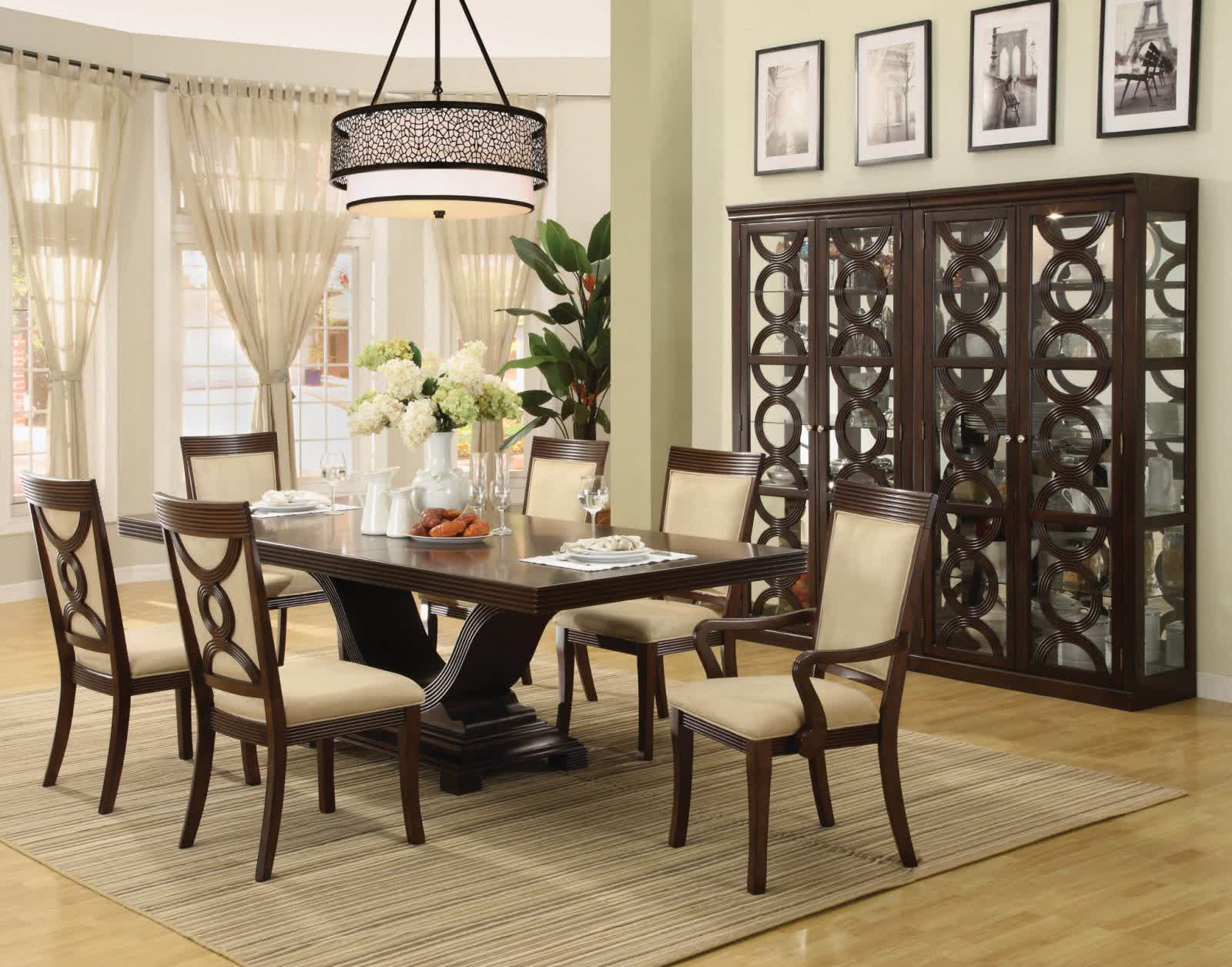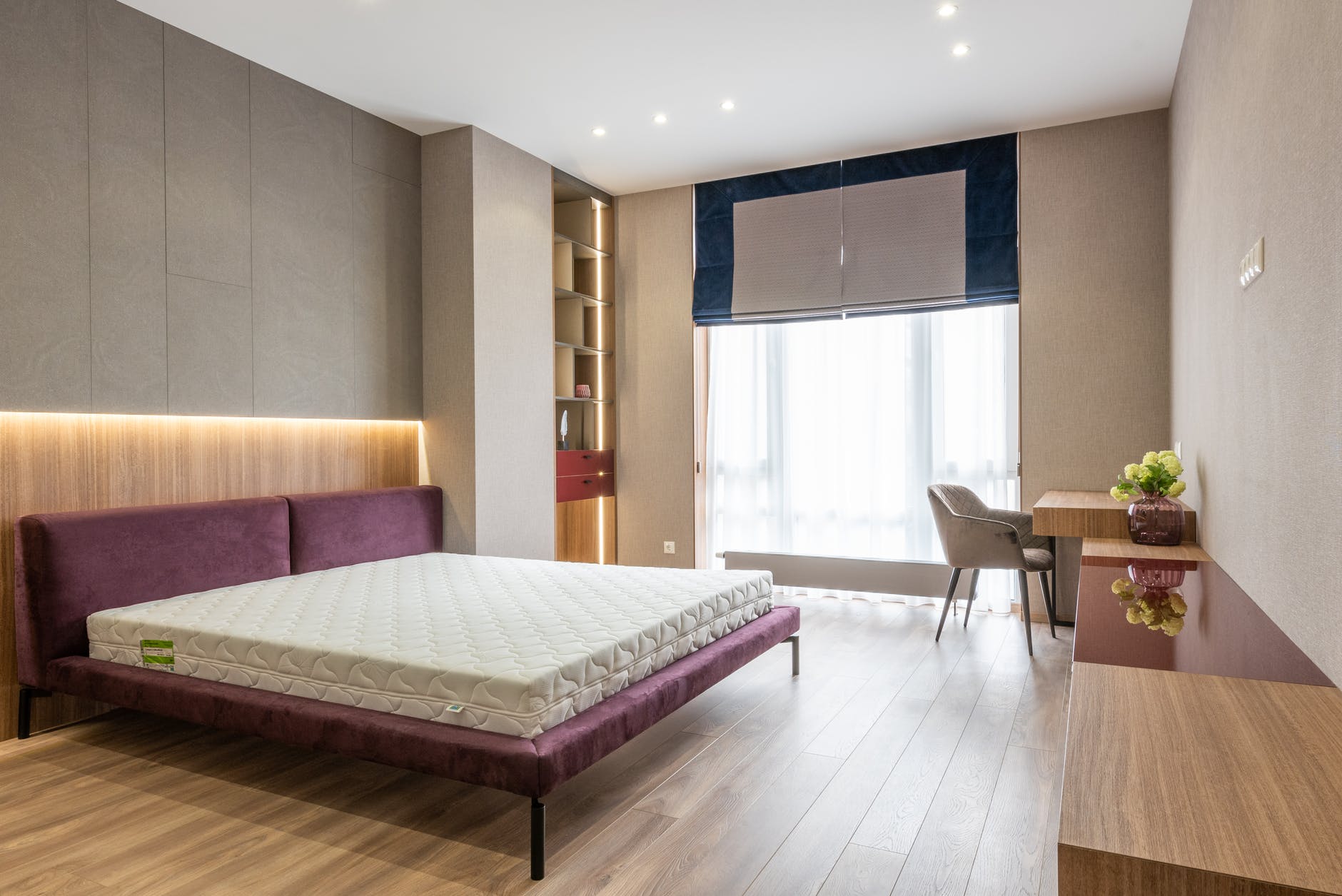A commercial kitchen design will include many different components, such as a refrigeration system, food preparation areas, storage, and equipment. The layout of the kitchen needs to be designed to be efficient, functional, and provide maximum safety for employees. The kitchen should be laid out according to health codes and have adequate space for employees to move around comfortably. The primary components of a commercial kitchen design include the following: Refrigeration System: The refrigeration system is the most important component of a kitchen design. It helps keep food fresh and stores it in an optimal temperature. The system also prevents spoilage and extends the shelf life of food. Food Preparation Areas: Food preparation areas are the areas of the kitchen where food is prepared and cooked. This area should be designed to ensure that the food is cooked safely and hygienically. The design should also ensure that employees can move around the kitchen easily. Storage: A kitchen must have sufficient storage space for both food and equipment. This includes both refrigerated and non-refrigerated storage. The storage units should be organized and labeled to make it easier for employees to find the supplies they need. Equipment: The equipment used in a commercial kitchen design includes cooking appliances, dishwashers, and other industrial machinery. The kitchen must have the right combination of equipment to ensure that it can produce the food needed in a timely manner.Primary Components of Commercial Kitchen Design
A well-designed commercial kitchen is essential for restaurants, hotels, and other food service establishments. Here are some tips for optimizing a commercial kitchen design: Plan Ahead: Before beginning the design process, it's important to plan out the layout of the kitchen. Consider the number of staff members and the types of food that will be prepared. Design the kitchen with these factors in mind. Allow Room for Expansion: When designing the kitchen, allow room for expansion in the future. This will allow the kitchen to keep up with changes in technology and customer demand. Maximize Efficiency: Design the kitchen to maximize efficiency. This includes providing enough workspace and efficient equipment placement. This will speed up the food production process and improve customer satisfaction. Maintain Hygiene and Safety Standards: Design the kitchen to meet hygiene and safety standards. This will ensure that the kitchen is clean and safe for employees and customers.Tips for Optimizing Commercial Kitchen Design
When designing a commercial kitchen, there are a few essential solutions that should be included. These solutions can help make the kitchen more efficient and reduce the risk of kitchen fires. Kitchen Ventilation System: A kitchen ventilation system helps to reduce smoke and grease in the air and create a more comfortable environment for employees. It will also help prevent the buildup of dangerous fumes and odors in the kitchen. Fire Suppression System: A fire suppression system is a must in any commercial kitchen. This system will help protect staff from fires and keep them safe while they work. Fire Walls and Doors: Fire walls and doors are essential for preventing and containing fires in the kitchen. They help contain the spread of flames and can help prevent a kitchen fire from becoming a major disaster. Sprinklers: Sprinklers should be installed in the kitchen to prevent a fire from turning into a major disaster. Sprinklers can help extinguish fires quickly and reduce the amount of damage caused.Essential Solutions for Commercial Kitchen Design
Employee safety is a key element of any commercial kitchen design. When designing the kitchen, safety should be a top priority. The design should consider the physical limitations and capabilities of employees so that all kitchen staff have a safe and comfortable workplace. Here are some tips for ensuring employee safety in a commercial kitchen design: Adequate Lighting: Adequate lighting is necessary to keep employees safe in the kitchen. Proper lighting can help reduce the risk of accidents and increase productivity. Safe Flooring: The design of the kitchen should include safety flooring. Non-slip flooring is essential for reducing the risk of slips and falls in the kitchen. Proper Staircase: A kitchen design should include a proper staircase for employees to access higher areas of the kitchen. This staircase should be designed to meet safety standards and have handrails for support. Safety Signs: Safety signs should be posted around the kitchen to remind employees of their safety obligations. These signs should include clear warnings and instructions for proper procedures.Employee Safety in Commercial Kitchen Design
Tools are essential for any commercial kitchen design. The right tools will make it easier to properly prepare food and ensure safety in the kitchen. Here are some of the tools needed for a successful commercial kitchen design: Knives and Cutlery: Knives and cutlery are essential for any kitchen. They are needed to properly prepare ingredients for cooking. The right type of knife should be chosen depending on the food being prepared. Mandolines and Graters: Mandolines and graters are necessary tools for cutting and grating food. These tools can help speed up the food preparation process and ensure uniform cuts of food. Thermometers: Thermometers are essential for ensuring food is cooked to the proper temperature. This is important for food safety, as undercooked food can lead to food-borne illnesses. Mixers and Blenders: Mixers and blenders are needed to mix ingredients for recipes and smooth out sauces and soups. Tool Requirements for Commercial Kitchen Design
Grease buildup is a common problem in commercial kitchens and can pose a hazard for staff. Proper grease control is essential for ensuring a safe and efficient kitchen environment. Here are some guidelines for controlling grease in a commercial kitchen design: Install Grease-Catching Excavations: Grease-catching excavations can be installed around the kitchen to help prevent grease from entering the drain system or electrical outlets. These excavations should be cleaned regularly to ensure they are working properly. Install Grease Traps: Grease traps are devices that trap grease before it enters the drainage system. These traps help reduce the amount of grease entering the plumbing and keep the kitchen clean. Use Grease-Proof Surfaces: When designing the kitchen, use surfaces that are grease-proof. These surfaces will help keep the kitchen clean and reduce the chance of grease fires. Provide Grease Removal Training: Provide staff with training on how to properly remove grease from the kitchen. This will help ensure that the kitchen is kept clean and safe.Guidelines for Grease Control in Commercial Kitchen Design
The cost of a commercial kitchen design will depend on a few factors. These factors include the size of the kitchen, the equipment needed, and the materials used. Here are some factors that can affect the cost of a commercial kitchen design: Size of the Kitchen: The size of the kitchen will affect the cost of the design, as a larger kitchen will require more materials and equipment. Equipment: The type of equipment needed for the kitchen will also affect the cost of the design. Industrial equipment can be expensive, but it is necessary for producing high-quality food. Materials: The materials used for the kitchen will have an impact on the cost of the design. High-quality materials such as stainless steel and concrete will last longer and be more expensive than other materials. Installation and Labor Costs: The cost of the design will also include the cost of installation and labor. Professional installers and contractors can charge more for their services, so it is important to get quotes in order to determine the total cost.Factors that Affect the Cost of a Commercial Kitchen Design
When designing a commercial kitchen, it is important to consider safety, efficiency, and cost. Here are some best practices for commercial kitchen design: Consult Professionals: Hire a professional kitchen designer who can provide advice on the best design for the kitchen. Adhere to Building Codes: Adhere to local building codes when designing the kitchen. This will help ensure the kitchen meets health codes and is safe for employees. Conduct an Assessment: Conduct an assessment of the kitchen periodically to identify any areas that may need improvement. Create a Plan: Create a plan for the kitchen that outlines the design and the goals for the kitchen. This plan can help guide the design process and make sure the kitchen is well-organized and efficient.Best Practices for Commercial Kitchen Design
Hiring a professional commercial kitchen designer can provide a number of benefits. These benefits include efficient layout, cost savings, and increased employee safety. Here are some of the benefits of professional commercial kitchen design: Efficient Layout: A professional designer can create an efficient layout for the kitchen. This will help reduce wasted space and create an ergonomic and functional design. Cost Savings: Professional kitchen design can help reduce costs by choosing materials and equipment that are within budget. Increased Safety: A commercial kitchen designer can create a safe environment for employees. This includes proper ergonomics, ventilation systems, and equipment placement. Customer Satisfaction: Professional kitchen design can help create a better customer experience. A well-designed kitchen can improve the overall quality of the food and create a positive atmosphere for customers.Benefits of Professional Commercial Kitchen Design
Ergonomics is an important factor in any commercial kitchen design. The layout and design of the kitchen should be designed to reduce strain on employees and create a safer working environment. Here are some tips for creating an ergonomic kitchen design: Provide Adequate Space: Adequate space is key for creating a comfortable working environment. Employees should have enough space to move around the kitchen comfortably and access equipment without difficulty. Optimize Equipment Placement: The placement of equipment should be optimized to reduce strain on employees. Equipment should be placed in areas that are easy to access and allow employees to move freely. Choose Ergonomic Furniture: Choose furniture that is designed to reduce strain on employees. This includes chairs and counters that are the right height for employees. Use Non-Slip Flooring: Use non-slip flooring to reduce the risk of slips and falls in the kitchen. This will help keep employees safe and reduce the risk of accidents.Ergonomics in Commercial Kitchen Design
Lighting is an important factor in any commercial kitchen design. Proper lighting can help reduce the risk of accidents and create a comfortable working environment. Here are some tips for choosing the right lighting for a commercial kitchen design: Choose the Right Bulbs: Incandescent bulbs should be used in the kitchen, as they provide bright and even lighting. LED bulbs are also a good option, as they produce less heat and last longer than incandescent bulbs. Make Use of Natural Light: Where possible, make use of natural light in the kitchen. Natural light can help to reduce energy costs and create a pleasant atmosphere for employees. Mount Lights Above the Counters: Mount lights above the counters to ensure they are properly illuminated. This will make it easier for employees to work and increase their productivity. Install Motion Sensor Lights: Motion sensor lights can help reduce electricity costs and provide light in areas that are not frequently used. This is helpful for dark areas of the kitchen and walk-in refrigerators. Lighting Requirements for Commercial Kitchen Design
How to Ensure Commercial Kitchen Design Meets All Requirements
 When designing a commercial kitchen, it is essential to consider a number of factors in order to ensure the project meets all requirements. A well-planned and designed commercial kitchen can help to maximize the efficiency of the space, allowing for increased productivity with fewer staff.
Commercial kitchen design
must also factor in factors such as health and safety regulations, layout, ergonomics, and energy efficiency.
When designing a commercial kitchen, it is essential to consider a number of factors in order to ensure the project meets all requirements. A well-planned and designed commercial kitchen can help to maximize the efficiency of the space, allowing for increased productivity with fewer staff.
Commercial kitchen design
must also factor in factors such as health and safety regulations, layout, ergonomics, and energy efficiency.
Things to Consider When Designing a Commercial Kitchen
 The first major consideration is the
layout
of the commercial kitchen. This involves understanding where each appliance and workstation needs to be, and how to optimize connecting pathways between them. Paying attention to how appliances interact with each other is important in creating a seamless flow of work. Furthermore, special considerations must be made in order to ensure the kitchen meets all legal requirements and standards.
The first major consideration is the
layout
of the commercial kitchen. This involves understanding where each appliance and workstation needs to be, and how to optimize connecting pathways between them. Paying attention to how appliances interact with each other is important in creating a seamless flow of work. Furthermore, special considerations must be made in order to ensure the kitchen meets all legal requirements and standards.
Health and Safety Regulations in Commercial Kitchen Design
 Health and safety regulations are a primary concern for commercial kitchens. This includes choosing appropriate flooring material, procedures surrounding infections, and the proper way to store and handle food. It is important to have detailed policies and enforcement regulations in order to avoid any disruption to service.
Health and safety regulations are a primary concern for commercial kitchens. This includes choosing appropriate flooring material, procedures surrounding infections, and the proper way to store and handle food. It is important to have detailed policies and enforcement regulations in order to avoid any disruption to service.
Ergonomics in Commercial Kitchen Design
 Since commercial kitchens often require standing for long periods of time, it is important to factor in ergonomics when designing and arranging the space. This involve ensuring that appliances are placed at an optimal height so that workers can easily reach them, as well as implementing adjustable surfaces. Additionally, providing appropriate cushioning for standing areas is important for the comfort of workers.
Since commercial kitchens often require standing for long periods of time, it is important to factor in ergonomics when designing and arranging the space. This involve ensuring that appliances are placed at an optimal height so that workers can easily reach them, as well as implementing adjustable surfaces. Additionally, providing appropriate cushioning for standing areas is important for the comfort of workers.
Energy Efficiency In Commercial Kitchen Design
 Another important factor in
commercial kitchen design
is energy efficiency. This involves ensuring that the kitchen meets all requirements for energy consumption, as well as being mindful of how to conserve energy throughout the year. This could include including LED lights, investing in energy efficient appliances, and leveraging natural light sources.
Another important factor in
commercial kitchen design
is energy efficiency. This involves ensuring that the kitchen meets all requirements for energy consumption, as well as being mindful of how to conserve energy throughout the year. This could include including LED lights, investing in energy efficient appliances, and leveraging natural light sources.
Conclusion
 When designing a commercial kitchen, there are a number of factors to consider in order for it to effectively meet all requirements. This includes understanding the layout, adhering to health and safety regulations, utilizing ergonomic techniques, and taking energy efficiency into account. By following these guidelines, restaurants can ensure their commercial kitchen design both meets their needs and stays compliant with legal standards.
When designing a commercial kitchen, there are a number of factors to consider in order for it to effectively meet all requirements. This includes understanding the layout, adhering to health and safety regulations, utilizing ergonomic techniques, and taking energy efficiency into account. By following these guidelines, restaurants can ensure their commercial kitchen design both meets their needs and stays compliant with legal standards.













































































